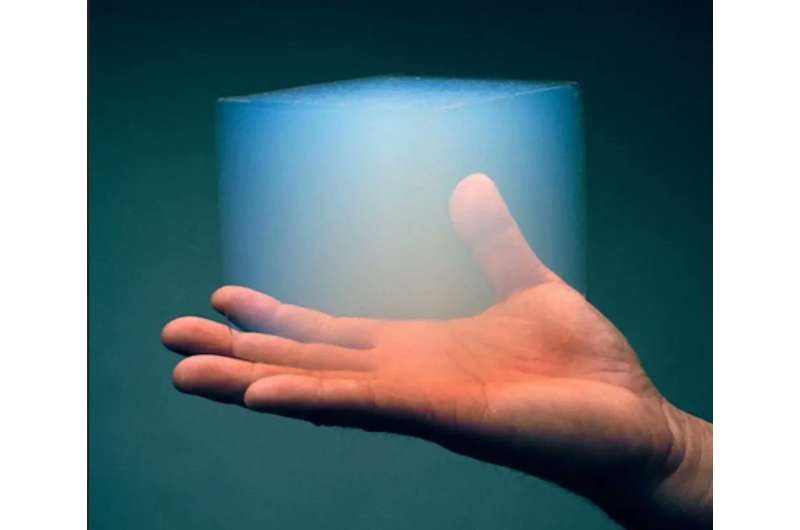Positron Dynamics hopes to tip that balance by utilizing two separate breakthroughs derived from other areas of research. The first novel approach would be to put the fissile material in an ultralight aerogel. The second would be implementing a superconducting magnet to contain those fission particles.
FFREs essentially utilize the same nuclear process that powers energy-generating nuclear plants on Earth. However, instead of generating only electricity, they also generate thrust and a very high amount of thrust at that. However, it's not practical to send a whole bar of uranium fuel, such as that used in fission reactors here on Earth, up into space.
Embedding the fuel itself into one of the lightest known human substances solves that problem. Aerogels are extraordinarily airy materials that look ethereal when someone is holding them, as they are in the lead image above. Embedding fuel particles for the fission reaction in them would be a convenient way to hold the fuel together while still allowing the overall structure to be light enough to be lifted into orbit.
However, the structure of the aerogels themselves wouldn't do much to contain the fission fragments are they break apart. To do so would require a massive outside force, which is where the superconducting magnet comes in.
Superconducting magnets are typically used in experimental fusion plants, where they are used to contain the plasma needed to heat the fusion fuel but which would otherwise destroy any normal material. Given all the interest in fusion research lately, high-power magnets have also been receiving extra research attention.
Adding one to an FFRE would allow engineers to channel the fission fragments all in the same direction, effectively turning them into a thrust vector. It has the added advantage of not allowing the fragments to destroy any other parts of the engine as well.
So far, this is all very theoretical, as there are still plenty of hurdles to overcome. But that is exactly what NIAC is for—fund early-stage projects and attempt to de-risk them. Maybe someday FFREs will be able to hit that sweet spot of speed and fuel efficiency that so many rocket scientists dream of.
Provided by Universe Today



